Guwahati in Monsoon: A Guide to the City's Climate
Guwahati is a city surrounded by hills and the big Brahmaputra River. When the rainy season comes, it rains a lot, and this changes how people live and celebrate. During this time, you can see colourful umbrellas and foggy views everywhere. It’s a time for fun festivals and traditions, even though the rain can make things a little tricky sometimes. The monsoon season makes Guwahati look beautiful and lively, but it’s important to be ready for the weather during this time. If you live there or are visiting, knowing what the weather will be like can help you enjoy your time better. In this guide, we’ll share everything you need to know about Guwahati in monsoon-like the weather, travel tips, and things to do.
Book here Guwahati Tour Packages.
Pros and Cons of Visiting Guwahati in Monsoon
1. Pros:
- Lush green landscapes: The monsoon season transforms Guwahati into a vibrant green paradise, enhancing its natural beauty.
- Lower temperatures: The rain helps to cool down the temperatures, making it more pleasant for outdoor activities and sightseeing.
- Fewer tourists: Visiting during the monsoon usually means fewer crowds, allowing for a more peaceful experience at popular attractions.
- Unique festivals: The monsoon season often coincides with local festivals, providing travellers with an opportunity to experience unique cultural events.
2. Cons:
- Heavy rainfall: The region can experience heavy downpours, which may disrupt travel plans and outdoor activities.
- Flooding risk: Guwahati is prone to flooding during monsoon, potentially leading to transportation difficulties and safety concerns.
- Slippery roads: Wet conditions can lead to slippery roads, increasing the risk of accidents while driving or walking.
- Limited visibility: Rain and fog can reduce visibility, potentially making it challenging to enjoy scenic views or navigate the area safely.
Weather Conditions of Guwahati in Monsoon
In Guwahati, the weather is quite special during the rainy season, which lasts from June to September. This is when the area gets a lot of rain because of strong winds coming from the southwest. The rain helps cool things down, and the temperature usually stays between 25°C and 30°C, making it much nicer compared to the hot weather before the rains. However, sometimes the heavy rain can cause floods, which can make it hard for people to get around and do their daily activities. On the bright side, all the rain makes the plants and trees grow green and beautiful, making Guwahati look lovely during this time, even though there can be some problems like water collecting in places and services being interrupted.
Top Things to Do in Guwahati in Monsoon
1. Visit Kamakhya Temple
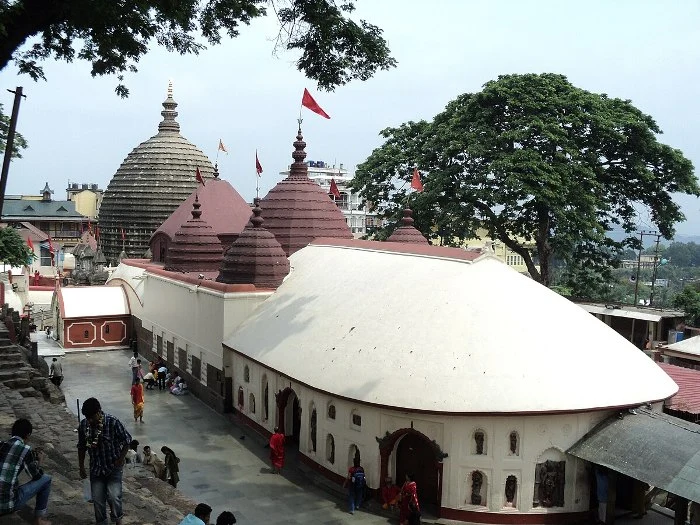
One of the holiest sites in India, the Kamakhya Temple sits atop the Nilachal Hill, surrounded by lush greenery. The monsoon season adds a mystical touch to this ancient temple with the sound of raindrops and the aroma of wet earth. Attend the rituals, soak in the spiritual vibes, and enjoy the breathtaking views of the Brahmaputra River amidst the clouds.
2. Explore the Assam State Museum
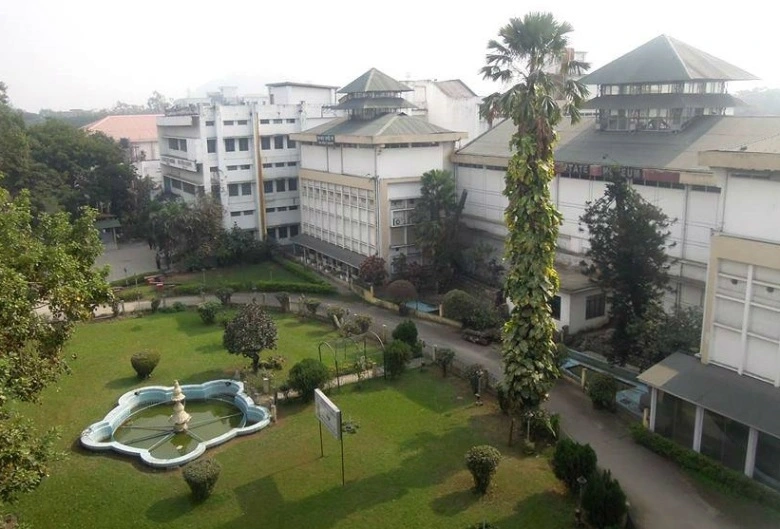
Perfect for a rainy day, the Assam State Museum offers a deep dive into the culture, art, and history of Assam. Inside, you can explore various exhibits showcasing traditional Assamese handicrafts, sculptures, and ancient artefacts. The soothing ambience makes it an ideal place to immerse yourself in the region’s rich heritage.
3. Experience the Guwahati Planetarium
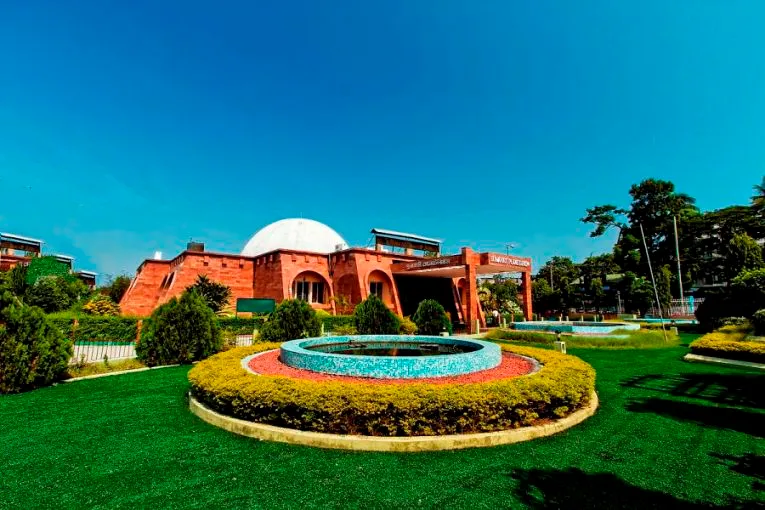
The Guwahati Planetarium offers an exciting indoor option if the rains intensify. With its engaging shows on astronomy and space science, it is both educational and entertaining. Check the schedule for interesting programs and explore the universe without worrying about the downpour outside.
4. Stroll at Nehru Park
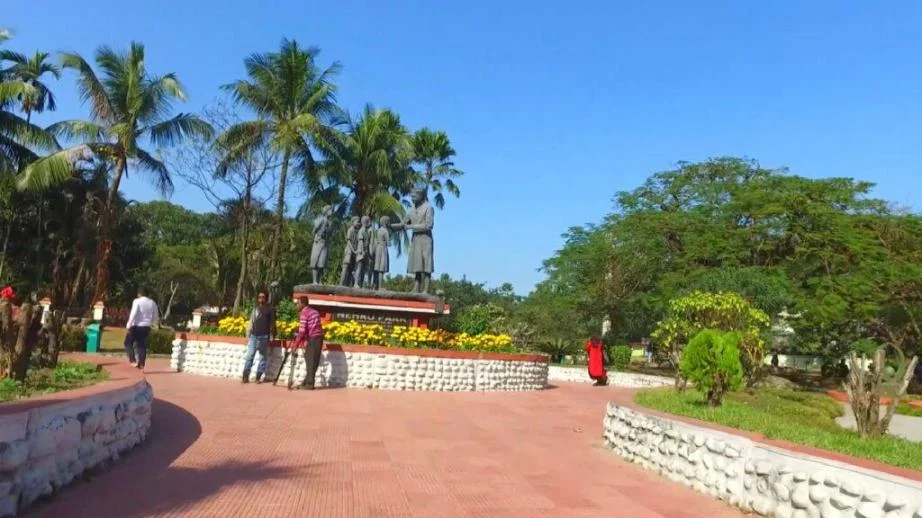
The monsoon transforms Nehru Park into a lush, green haven, populated with beautiful flowers, trees, and the soothing sound of raindrops. This urban park, located in the heart of the city, is perfect for a stroll, picnics, or simply enjoying the fresh aroma of wet earth. The occasional drizzle only adds to the experience, making it a cherished getaway from the bustle of the city.
5. Enjoy Local Cuisine
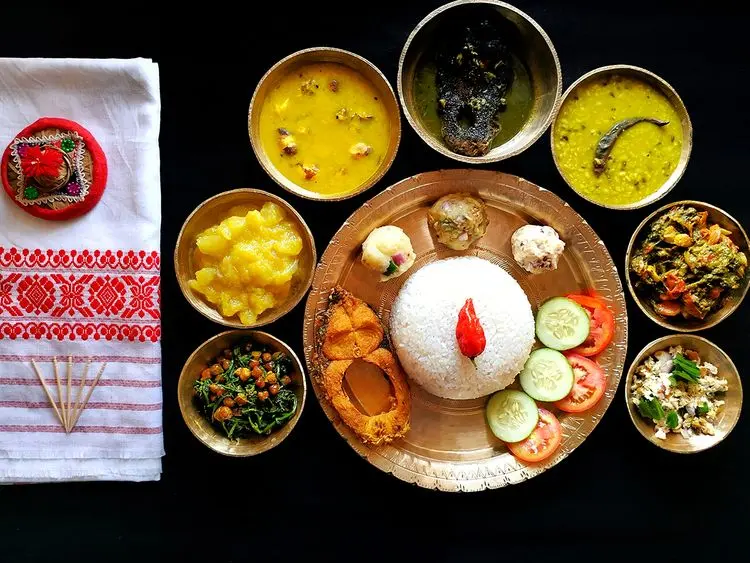
Monsoons are synonymous with cosy evenings and delicious food. Dive into the local cuisine by savouring Assamese delicacies such as Pitha (rice cakes), Fish Tenga (sour fish curry), and Masor Tenga (fish in a tangy broth). Many roadside eateries offer piping hot snacks like bhaji (fritters) and hot tea, perfect for a rainy day.
What to pack for the Monsoon trip to Guwahati?
1. Waterproof clothing: Pack a good quality raincoat or a waterproof jacket to stay dry during heavy downpours.
2. Umbrella: A sturdy, windproof umbrella will come in handy to shield you from the rain.
3. Quick-dry clothing: Pack lightweight, quick-dry clothing that can easily dry off in humid conditions.
4. Waterproof footwear: Opt for waterproof shoes or sandals that provide good traction to navigate through wet and slippery surfaces.
5. Insect repellent: During the monsoon season, there may be an increase in mosquitoes, so pack insect repellent to protect yourself from bites.
6. Plastic bags: Pack a few extra plastic bags to keep your electronics, documents, and other important items safe from water damage.
7. First aid kit: Be prepared for minor injuries by packing a basic first aid kit with essentials like band-aids, antiseptic cream, and pain relievers.
Tips for travelling to Guwahati in Monsoon
1. Check the weather forecast before you go, and be prepared for rain. Pack waterproof clothing, shoes, and accessories to keep yourself dry.
2. Plan your travels carefully and allow extra time for potential delays due to the weather.
3. Be cautious while driving as the roads may be slippery and visibility may be reduced. Consider hiring a local driver who is familiar with the area and the conditions.
4. Keep an eye on local news and updates for any potential flooding or landslides in the region.
5. Pack insect repellent as the monsoon season can bring an increase in mosquitoes and other insects.
Conclusion
In Conclusion, when it rains a lot from June to September, Guwahati looks beautiful but can also be a bit tricky. The plants and trees become bright green, and the places near the Brahmaputra River and the hills look amazing. When it rains a lot, the ground can get wet and muddy, which can make it hard to drive and sometimes cause water to collect in places. Some fun outdoor activities like hiking and boat rides might not happen because of the rain, but there are still lots of interesting things to see and do inside the city. If you love the beauty of the rain and don’t mind getting a little wet, visiting Guwahati during the rainy season can be special.
Here you can also check our Guwahati Tour Packages.
People also ask about Guwahati in Monsoon
1. When is the monsoon season in Guwahati?
The monsoon season in Guwahati typically lasts from June to September. During this period, the region experiences heavy rainfall, which can lead to flooding in some areas, while simultaneously nourishing the stunning landscapes.
2. Are there any travel restrictions due to the rain?
While monsoon rain can disrupt local transportation, there are usually no official travel restrictions. However, it’s advisable to check with local authorities or travel advisories before planning your trip. Some roads may become impassable, and landslides can occur in hilly areas, so remain updated on weather conditions.
3. Is it safe to travel to Guwahati during the monsoon?
Yes, travelling to Guwahati during the monsoon is generally safe, but preparation is key. Be cautious while navigating roads, follow local advice, stay updated on weather forecasts, and prepare for sudden downpours. Travelling with a local guide or reputable tour operator can also enhance safety and provide insights into the region.
4. Is there a risk of floods during the monsoon in Guwahati?
Yes, Guwahati is prone to waterlogging and occasional flash floods during heavy downpours. Stay updated on weather reports and avoid travelling during times of severe rainfall.
5. How is the public transportation during the monsoon in Guwahati?
Public transportation is generally operational, but expect delays due to waterlogging or traffic disruptions caused by heavy rain. It’s best to have flexible plans.
6. Are hotels in Guwahati available during the monsoon season?
Yes, hotels and accommodations are easily available during the monsoon. You may also find attractive off-season discounts.
